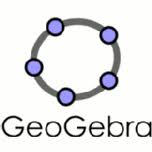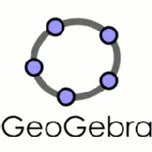| 我们致力本地化我们在尽可能多的语言的网站越好,然而这一页是机器使用谷歌翻译翻译。 | 关闭 |
-
-
产品
-
资源
-
支持
-
公司
-
登录
-
.ggb 文件扩展名
开发商: GeoGebra文件类型: GeoGebra Document你在这里因为你有,有一个文件扩展名结尾的文件 .ggb. 文件与文件扩展名 .ggb 只能通过特定的应用程序推出。这有可能是 .ggb 文件是数据文件,而不是文件或媒体,这意味着他们并不是在所有观看。什么是一 .ggb 文件?
该.ggb文件扩展用于通过使用GeoGebra应用创建的文件。这个应用程序是一个数学的应用程序,因为它是与数学题目,如代数,微积分,几何等数学这个应用程序的目的是教育用户,尤其是学生,当它涉及到的数学方程,他们发现很难解决。这个程序可以让他们轻松解决方程和制造出任何的数学活动,他们被告知的事情。在几何形状,用这个软件可以让他们轻松轻松工艺线,角度和其他数学相关的图纸。这使得数学作业更容易完成。保存使用该应用程序使用的全部通过GeoGebra创建这些文件,几何文件,代数文件或任何文件.ggb文件扩展名,因此,认定为.ggb文件。这个文件的扩展名可以很容易地在地理格式显示的数据。这些.ggb文件可以打开使用GeoGebra的应用程序,但像LaunchAnywhere和Java Web Start的启动程序也可以打开.ggb文件。如何打开 .ggb 文件?
推出 .ggb 文件,或者你的电脑上的任何其他文件,双击它。如果你的文件关联的设置是否正确,这意味着应用程序来打开你的 .ggb 文件将其打开。这是可能的,你可能需要下载或购买正确的应用程序。这也有可能是你有正确的应用程序在PC上,但 .ggb 文件还没有与它相关联。在这种情况下,当您尝试打开一个 .ggb 文件,你可以告诉Windows的应用程序是正确的该文件。从这时起,打开 .ggb 文件将打开正确的应用程序。 点击这里修复.ggb文件关联错误打开一个应用程序 .ggb 文件
 GeoGebra for MAC
GeoGebra for MACGeoGebra for MAC
GeoGebra for Mac is an interactive mathematics software for free. The aim of this software is to connect numeric, geometric and algebraic representations in an interactive approach. You can construct mathematical representations using geometric objects, figures, text, animations, scripting and other functions. You can directly enter and control coordinates and equations. You can work with sliders, create plots and define points in a path or region to determine parameters. You can find perform powerful commands and look for derivatives such as sequence or root. GeoGebra constructions are built using objects, tools, functions, expressions and commands provided by the software. The main window is divided into two default views, Algebra View on the left and Graphics View on the right. Above these views are the Menubar and the Toolbar. You can place Navigation Bar below the two. You can use keyboard shortcuts to use features, or accessibility features like virtual keyboard. Menus include File, Edit, View, Options, Tools, Window and Help. There are 4 types of views: Algebra, CAS, Graphics and Spreadsheet. Dialogs include Properties, Construction, Tool Creation, Tool Manager, Redefine, Options, Export Graphics, Export Worksheet and Print Preview. You can publish your work online at GeoGebraTube. You can print your GeoGebra works together with the Construction Protocol. Your image files can be saved in different formats. GeoGebra for Mac requires PPC/INTEL, Mac OS X 10.4 or later. GeoGebra for Linux
GeoGebra for LinuxGeoGebra for Linux
GeoGebra is an open-source mathematics application used in schools that combines dynamic algebra, geometry and calculus. It is written in Java and available on multiple platforms. You can create dynamic constructions using the tools and objects in GeoGebra. Geometric objects include lines and axes, points and vectors, functions, curves, inequalities, conic sections and arcs. Lists of points, loci, lines, arcs, polygons, conic sections, functions, intervals and single variable equalities are called paths. Lists of other paths are paths, too. You can define the point belonging to a path using Point Command. Each point on the path has path parameter ranging from numbers 0 to 1. You use the PathParameter Command to determine this parameter. You can also define a point to a region [arc, conic, polygon, two variable inequalities] using Pointln Command or Point on Object Tool. General objects are numbers and angles, Boolean values, complex numbers, lists, matrices, images and texts. Action objects are useful in making interactive worksheets with scripting. They are: checkboxes> graphical representations of Boolean values; input boxes> text inputs for scripts; buttons> trigger scripts when clicked; comboboxes>only available in Spreadsheet View, a combination of buttons and checkboxes in Speadsheet Tab. Object properties include visibility, fixed objects that cannot be moved, deleted or redefined, filling [standard, hatch, image] and advanced features such as conditional visibility, layers and dynamic colors. There are 3 types of objects in GeoGebra: free objects> do not depend on other objects for position or value; dependend> depend on other objects; auxiliary> defined by user or created by specific tools. You can make labels and captions, change values, select and name objects, do automatic or manual animation of numbers, angles and points. Repetition of an animation cycle could be increasing, decreasing or oscillating [alternate between increasing and decreasing]. You can also do tracing and scripting using JavaScript and GGBScript.提醒一句
要小心,不要重命名扩展 .ggb 文件,或任何其他文件。这不会更改文件类型。只有特殊的转换软件可以从一个文件类型更改一个文件到另一个。什么是文件扩展名?
文件扩展名是一组三个或四个字符在文件名的末尾,在这种情况下, .ggb. 文件扩展名告诉你它是什么类型的文件,并告诉Windows哪些程序可以打开它。窗户经常关联一个默认程序的每个文件的扩展名,这样,当你双击该文件,程序会自动启动。当该程序不再是您的PC上,有时可以得到一个错误,当您试图打开相关的文件。发表评论

